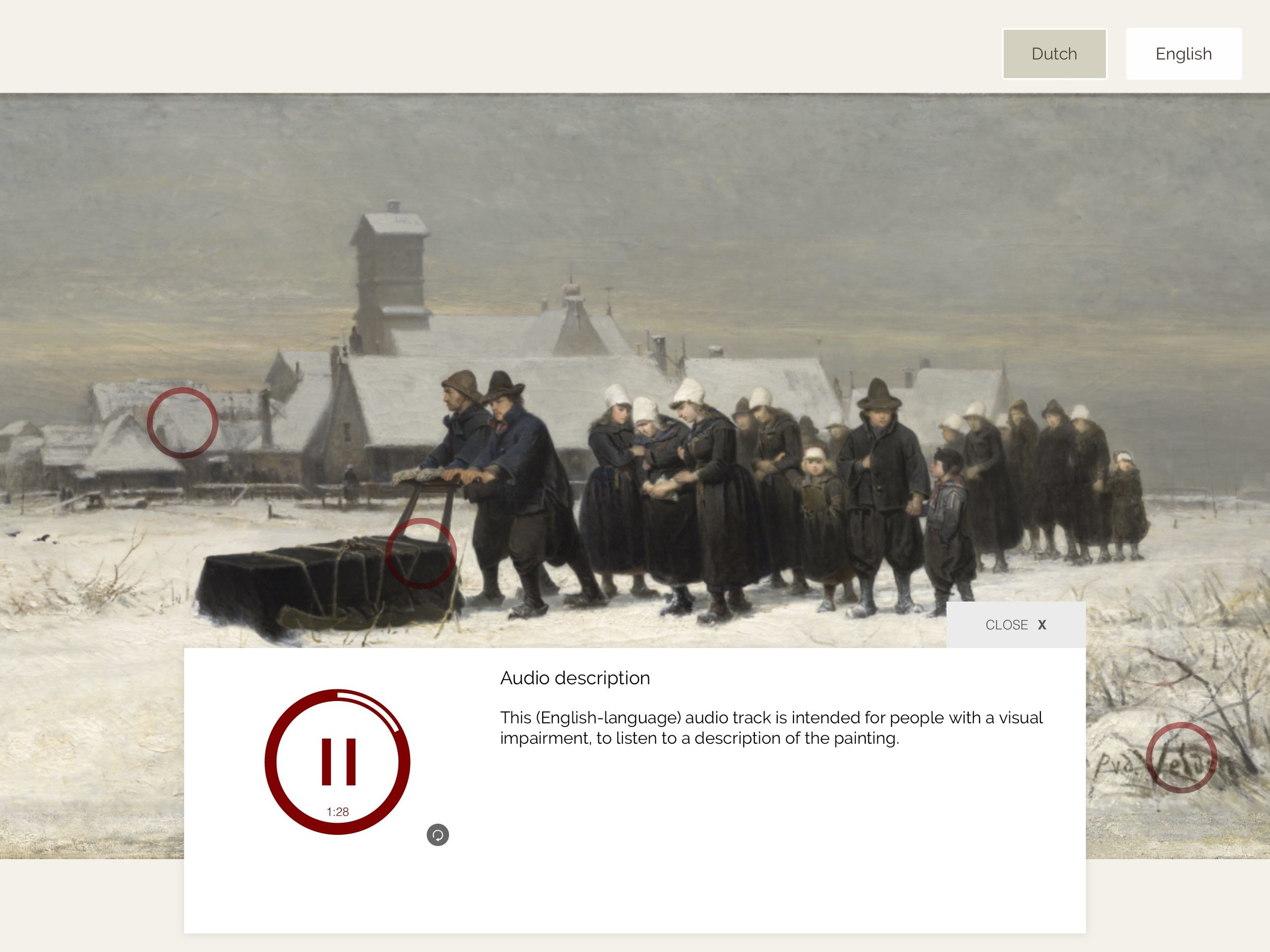Accessibility is a key priority for museums everywhere as we all strive to be inclusive for everyone visiting the museum. Curio is designed to make it super easy to reach a variety of audiences and I’d like to share some tips on how you can do that.
Audio descriptions for sight impairment.
First, let’s think about those with impaired sight, or even total blindness. Adding an audio track where you describe the object in detail allows those visitors to “see it” by listening.
In this case we’ve done this by using the “Overview” button, and adding an audio track to that. The track can then be selected and played for visitors. The description covers things we may take for granted like the size of the object, it’s mood, colours and story, as well as its physical attributes.
Including sign language
There are a few ways that you can include sign language using Curio. In New Zealand it is an official language that we simply don’t see enough of. You would need to shoot the video and we have a lot of experience and can help you with advice and contacts. (Contact us for any help at all.)
First, you can add sign language videos into any highlight by uploading them as you would a normal video.
Secondly, you use the language function to add another language. Having done that you can name the language by editing its display name. This could then display a language button (e.g. “a Deaf perspective”) and all the content on each highlight could be told from that perspective. It means sign language videos could be included as an alternative for this “language” and audio tracks could be replaced with sign or text alternatives.
(This can easily apply to a number of specialist audiences; the example below is content catering for younger children)
adding subtitles to video
Another way to make video content accessible for those who can’t hear is to add subtitles.
To do that you add your subtitle file (.vtt) as you would for, say, a You Tube video, when you upload your video.
It’s worth remembering that subtitles aren’t always the easiest way to “watch” a video as reading at the pace of someone talking can assume excellent language and reading skills, plus you can miss much of the imagery when you’re busy reading.
Keep text legible
Another thing to think about is ensuring your on screen text is easy for everyone to see. Curio has a fabulous customise tool to let you select colours, fonts, sizes and background colours. As you do all that though, our advice is to publish the interactive to the actual screen you will be using, to test how it looks.
One of the most important things to consider is keeping a really good contrast between the background colour and the font colour.
When you think you’ve got it right - ask a variety of your visitors for feedback. Check in-situ too, to check for legibility in the light conditions of the actual space it will go in, as well as the actual screen size.
Consider the physical ergonomics, as well
Finally, take a look at the height and position of your touchscreen. Try using it yourself by sitting in a chair, and imagine you don't have great use of your upper body - how is reaching for those buttons? Where are the speakers positioned? Is there glare on the screen?
When you think you've got it right, check in with your community and invite them to test it for you.
useful links
There are many great resources out there to assist you with things like:
checking your colour contrast is adequate to make text legible
the official Web Content Accessibility Guidelines are useful (although obviously aimed at websites)
six excellent case studies on accessible museums
the Museum For All Blog is also a good place to learn more
put yourself in their shoes
To truly embrace accessibility, the very best things you can do are:
think - imagine your experience from another perspective; how would someone with different physical capabilities experience it?
listen - start conversations with those in your community who can give you first hand feedback.
watch (& learn) - observe different people encountering your space and experiences, and note what works and what doesn't.
Keeping our minds, hearts and eyes open can simply be the best thing we can do to be truly inclusive.





